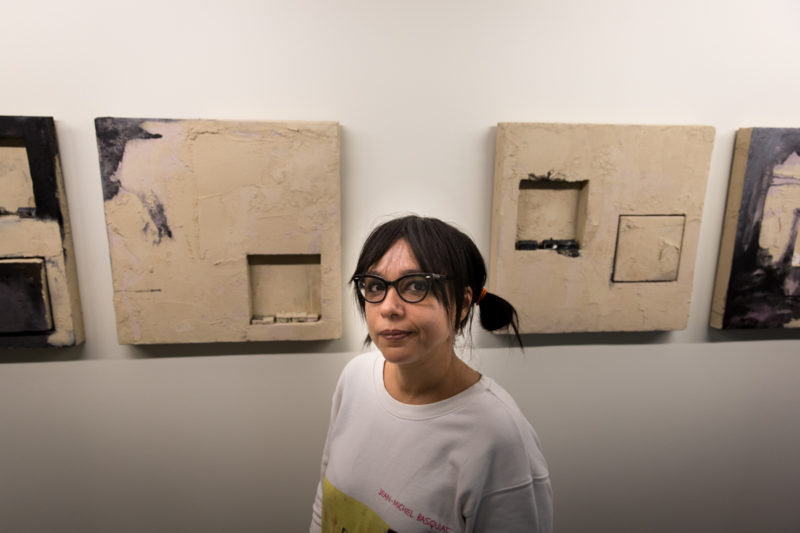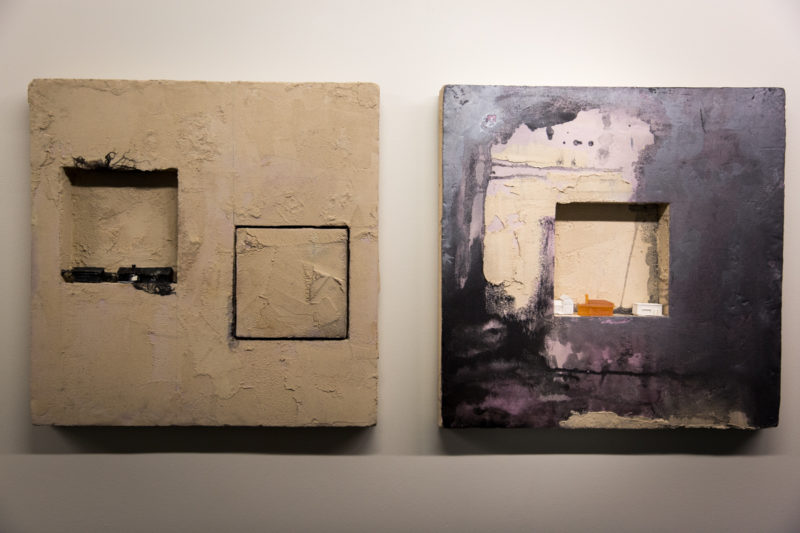City’s First Artist in Residence Has an Unusual Assignment
By Alvaro Céspedes
Reporting Texas

Rehab El-Sadek, an immigrant from Alexandria, Egypt, will be the City of Austin’s first artist-in-residence. Shelby Knowles/Reporting Texas
For a city department charged with protecting Austin from floods, erosion and water pollution, a full-time artist might seem an unusual hire.
But this is Austin. And things tend to work a little differently here.
Rehab El Sadek, a 45-year-old Muslim artist born and raised in Egypt, joined the Watershed Protection Department as the city’s first artist in residence on May 1. According to the city’s press release, she’ll spend the next nine months exploring “pathways for ideas to be more fully exchanged between the community and the city department.”
While El Sadek and Watershed staff don’t know exactly what that entails, she already feels at home.
In Austin, “everybody is excited about art,” she said.
Regardless of what can be an unwelcoming climate for Muslims, she said, she felt welcome in America.
“United States is made up of many different kinds of people, different nationalities,” she said. “Everybody is from everywhere.”
The pilot program was based on past successful collaborations between artists who tend to contribute outside-the-box ideas and urban governments. Major cities including Boston, Los Angeles and New York have implemented artist-in-residence programs. The New York City sanitation department had an artist in residence, Mierle Laderman Ukeles, for over 35 years.
Since leaving the city, Ukeles has become one of the most significant feminists in American visual art. Her work has focused on urbanism and the environment, themes that also interest El Sadek.
Austin’s Watershed Protection Department was chosen to pilot this project because of its reputation for experimenting with different projects.
“We know them to be a really creative department,” said Susan Lambe, the administrator of the city’s Art in Public Places Program.
But this is not the department’s first encounter with public culture. In 2015, it joined efforts with Austin’s Cultural Arts Department for the installation of a permanent kinetic sculpture at Auditorium Shores.
The installation, by Andrew Bellatti Green and Adam Pyrek, is called Cyclical Interplay. The sculpture changes shapes with rainfall and the water level on the lakes. Its purpose it to raise awareness and educate people on climate change in the city.
El Sadek wants to contribute more to Texan’s awareness of environmental issues.
“In a lot of my work, I use natural material, and I get inspiration from the environment and from changes,” she said. “It’s not new that I will be dealing with changes in nature.”

“Home Night Topography,” a recent work by El-Sadek inspired by night walks in Dallas, is currently on display in Austin’s City Hall. Shelby Knowles/Reporting Texas
Her work has spanned various artistic forms, from photography to installation pieces, and covered topics from women’s rights to the relationship between humans and the natural environment. She is currently exhibiting a piece, “Home Night Topography,” in the People’s Gallery on the second floor of Austin City Hall.
El Sadek has had solo exhibitions in Cairo, London, Amsterdam and Dallas, and has participated in group exhibitions in numerous African countries.
She recently moved to Austin from Dallas, but she has already figured out the city and finds what she calls the “spirit of Austin” in the Watershed Department.
“Everybody wants to help and to help you get better, and to have fun. That’s part of it. I thought ‘I am in the right place.’”
Since she started, she has been working closely with the staff to figure out what she will be doing during her time in Watershed Protection.
Jessica Wilson, education manager at the department, doesn’t know what El Sadek’s final piece will be.
“It’s going to need a lot of cooperation and a lot of excitement,” Wilson said. “But that’s already happening, so we’re not worried about what will happen at the end of this.”
Funding for the project comes from the city budget. El Sadek will receive $8,750 for a nine-month stint working with the department and a maximum of $5,000 for “residency-related expenses.”
It’s exactly this type of experiment in culture and arts that El Sadek enjoys about Austin. Understanding different cultures and nationalities, which is becoming increasingly threatened by state and federal immigration policies, is crucial in El Sadek’s work, she said.
“I found out that Austin is the best place for me,” she said. “I don’t want to move, ever.”